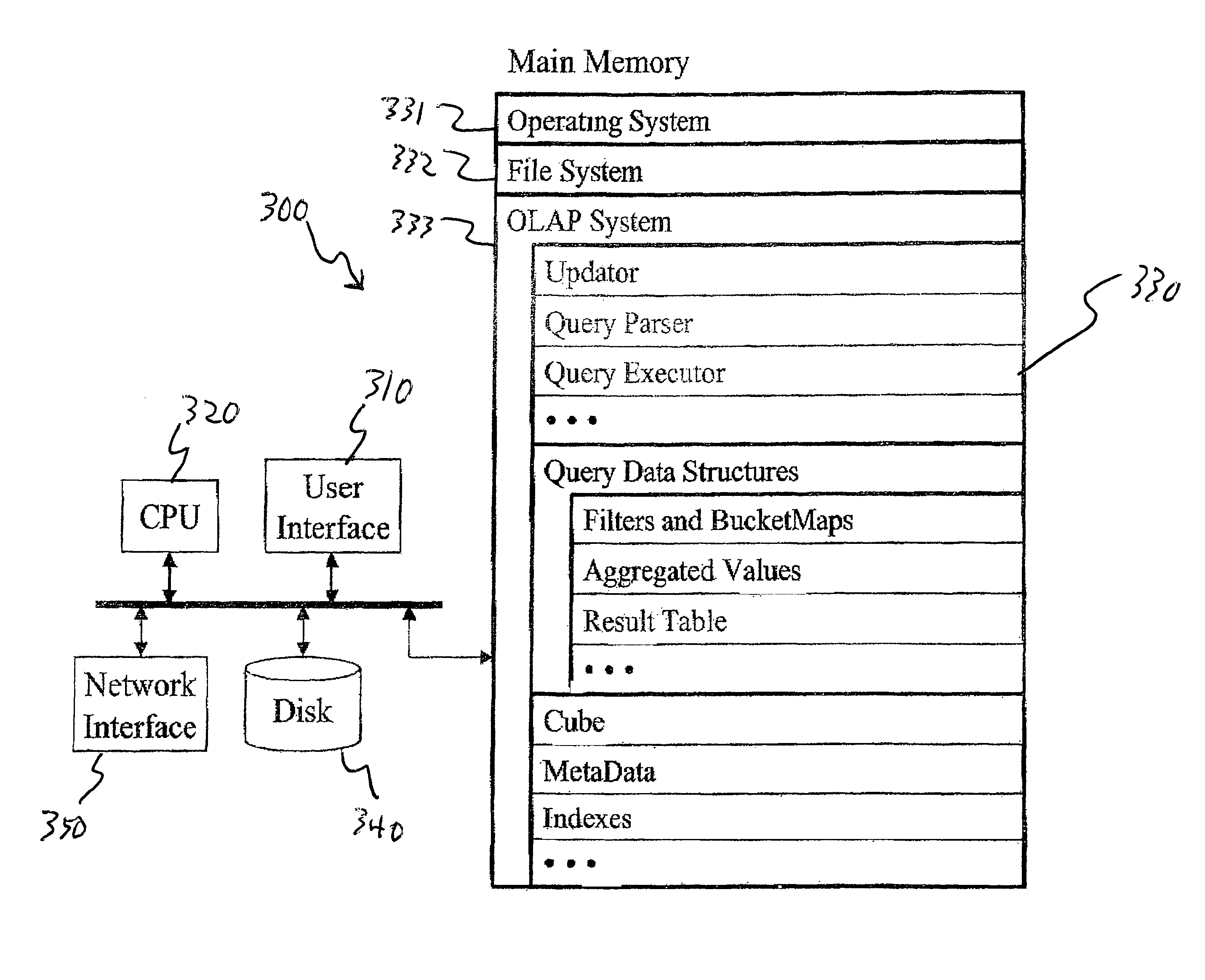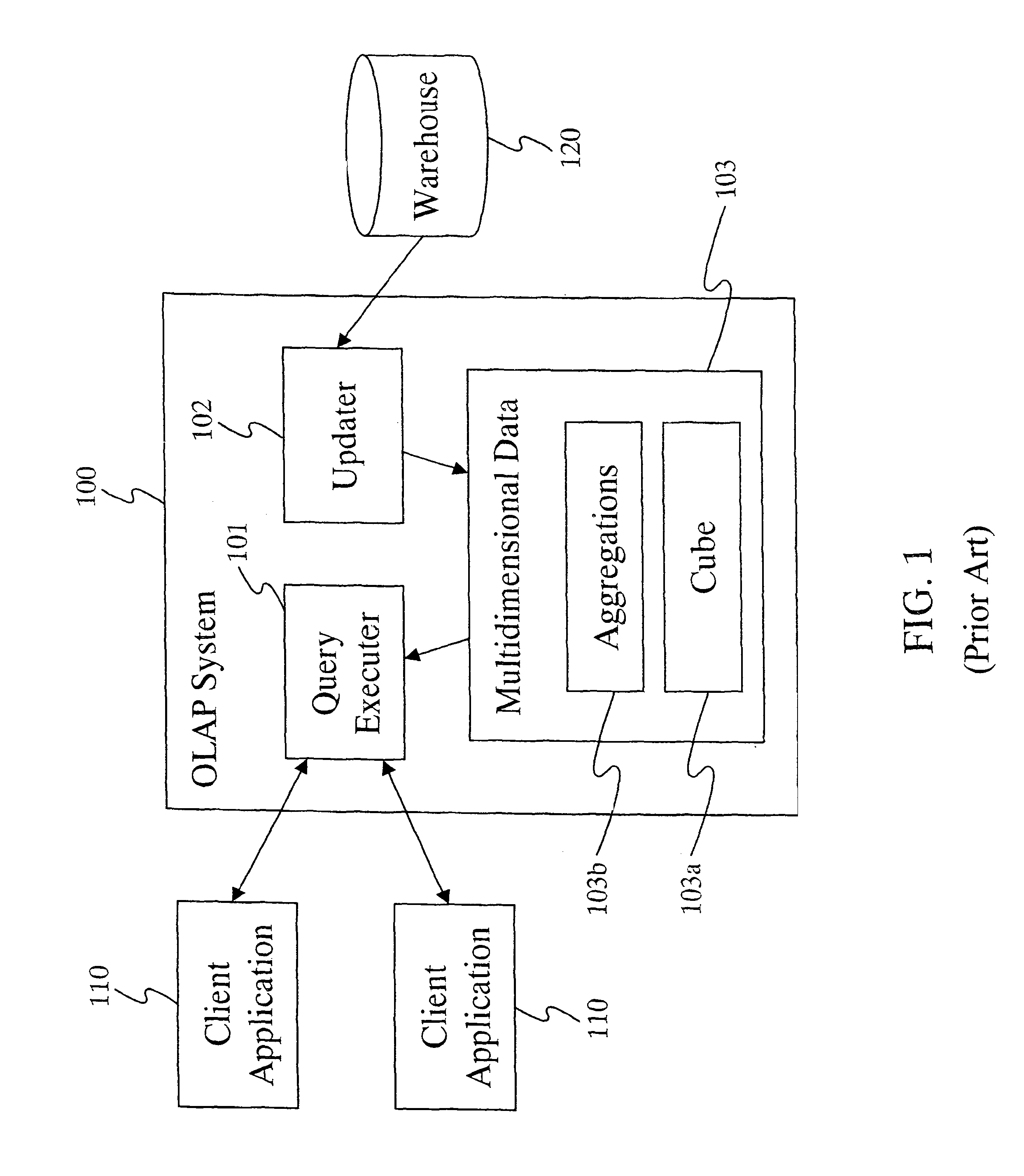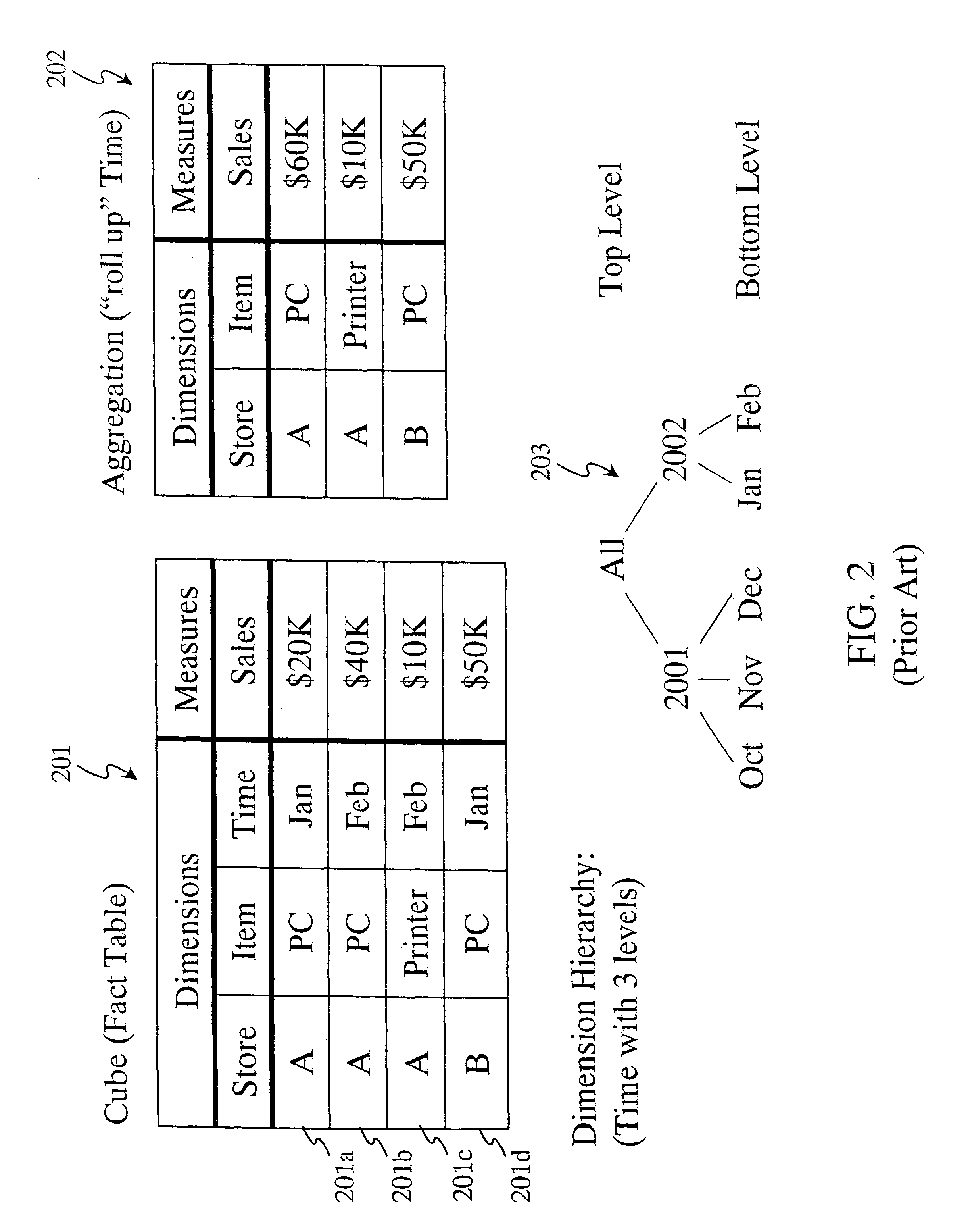[0011]The invention provides systems or apparatus, methods, data structures and / or computer programs for implementing an on-line analytical
processing system (OLAP) system that enable increased query execution speed, require reduced data storage capacity for the OLAP system and / or facilitate scaling of the OLAP system to large data cubes. The invention can advantageously be implemented as an all-main memory OLAP system.
[0012]One aspect of the invention is an all-main memory OLAP system, as well as methods, data structures and / or computer programs for implementing such an OLAP system. In an all-main memory OLAP system, all of the cube and associated
metadata are stored in main memory. In particular, the invention provides data structures and methods that enable implementation of an all-main memory OLAP system. The invention advantageously enables substantial reduction of both main memory requirements (to enable handling of large data volumes) and query
execution time. The managed data can be stored in a compact representation, in which
individual data values are encoded with the minimally required number of bits. A
data structure that enables fast access to
individual data values can be computed as part of the
metadata associated with a
database. Additionally, several query-specific auxiliary data structures can be pre-computed during query
parsing to reduce the runtime of the remainder of query execution. Arrays can be used in these data structures to provide very fast implementations of sets and mapping functions.
[0013]Another aspect of the invention is a method for implementing indexes with very low main memory requirements. To create an index for a single column, the stored records can be sorted according to this column. Then the position of only the first
record with a particular column value needs to be stored. Since in OLAP systems the number of possible values of a column is typically several orders of magnitude smaller than the number of records, significant main memory savings can be achieved. The sorting
index method can be extended to more than one index. It can also—with a small
execution time cost—use binary search or
dictionary search to find records and not store any
record positions at all.
[0014]Another aspect of the invention is a method to support large query result sets. The presented OLAP
query language enables requesting a slice of the
result set by specifying the first row and the number of rows to be returned. (
SQL, the standard
query language of OLTP systems, supports only a subset of this functionality, namely, requesting the top N rows to be returned.)
Result set slices are most useful for an ordered
result set. The invention can be implemented to make use of a
data structure that enables sorting and
slicing a
result set with low memory overhead. In one embodiment of the invention, a method for presenting a result of an OLAP query includes the steps of producing a result table having multiple rows, identifying a subset of the rows of the result table (a result table “slice”), and providing the subset of the rows of the result table as the result of the OLAP query. The subset of rows can be one or more groups of contiguous rows of the result table or rows of the result table spaced at regular intervals. It is anticipated that typically the rows of the result table will be produced without aggregation of records; however, the invention can also be used to produce result table slices for result tables including rows produced with aggregation of records. The invention can further be implemented to enable navigation among result table slices in a manner similar to that used to navigate among pages of “hits” identified by a
search engine.
[0015]Another aspect of the invention is a method to parallelize a main memory OLAP system to run on a cluster of computers (or nodes). A parallel OLAP system according to the invention can scale to a large data volume by using the combined main memory of a large number of nodes. Records can be assigned uniformly at random to the nodes, which results in randomized load balancing and enables close-to-linear speedups for query execution. This aspect of the invention can be implemented so that nodes communicate little during query execution, resulting in modest network bandwidth requirements. Additionally, a parallel OLAP system according to the invention can be implemented to automatically recover from node failures, making the system highly reliable. In one embodiment of the invention, an OLAP system includes a master node, a
distributor node and multiple aggregator nodes. The master node can define partitions of an OLAP data cube, assign each cube partition to an aggregator node, and effect transmission of data representing each cube partition to the aggregator node to which the cube partition is assigned. The
distributor node can receive a query transmitted from a
client application and transmit the query to aggregator nodes. The
distributor node can also receive a
partial response to the query from each of multiple active aggregator nodes, combine the partial query responses to produce a
complete response to the query, and transmit the complete query response to the
client application. Each of the aggregator nodes can receive data representing a cube partition assigned to the aggregator node. Each aggregator node can also receive a query from a distributor node, execute the query with respect to the cube partition assigned to the aggregator node to produce a
partial response to the query, and transmit the partial query response to a distributor node.
 Login to View More
Login to View More  Login to View More
Login to View More 


